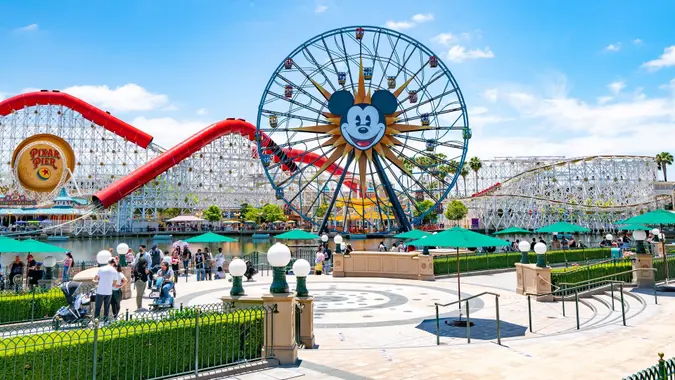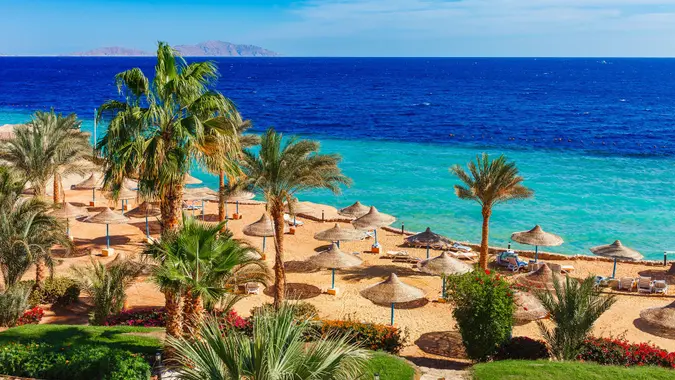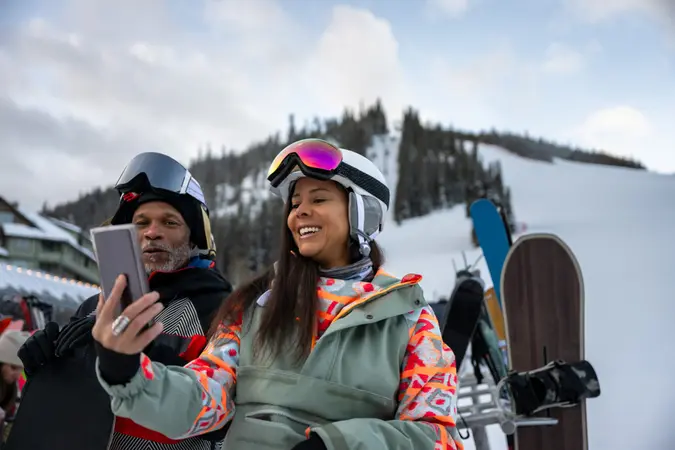8 National Parks Where Visitors Spend the Most Money — and 3 Ways To Save on Your Next Trip

Commitment to Our Readers
GOBankingRates' editorial team is committed to bringing you unbiased reviews and information. We use data-driven methodologies to evaluate financial products and services - our reviews and ratings are not influenced by advertisers. You can read more about our editorial guidelines and our products and services review methodology.

20 Years
Helping You Live Richer

Reviewed
by Experts

Trusted by
Millions of Readers
Many people consider a vacation to a national park an affordable alternative to major cities, theme parks or other typical tourist attractions. You might be surprised to learn that visitors spend a lot of money visiting national parks each year, spending $26.4 billion in 2023 (the most recent year for which data is available). This number has climbed fairly steadily over the years, except in 2020, when the pandemic halted most travel plans.
But spending isn’t divided evenly across the states. Visitors spent nearly $3.2 billion in California in 2024, but only $1.7 million in New Hampshire, the state where spending was lowest, according to data curated by LendingTree from the National Park Service. Read on to see where visitors spend the most money and how to save on your next vacation.
Spending at National Parks
These tables show the top eight states where spending related to state park vacations is the highest and the individual state parks, preserves, recreation areas, parkways and national seashores where visitors spend the most, per LendingTree’s analysis.
These figures include not just in-park expenses and admission but related vacation expenses like gas, hotels and dining near the area, indicating the importance of these national attractions to local tourist economies.
States Where People Spend the Most at National Parks
Here’s a look at the top eight states where national park visitors spend the most.
| State | Amount Spent |
| California | $3.2 billion |
| North Carolina | $2.6 billion |
| Utah | $1.9 billion |
| Alaska | $1.5 billion |
| Virginia | $1.5 billion |
| Tennessee | $1.4 billion |
| Arizona | $1.2 billion |
| Wyoming | $1.1 billion |
National Parks Where People Spend the Most Annually
And here are the specific national parks where visitors spend the most money.
| National Park | Amount Spent |
| Great Smoky Mountains National Park | $2.2 billion |
| Golden Gate National Recreation Area | $1.5 billion |
| Blue Ridge Parkway | $1.4 billion |
| Grand Canyon National Park | $768.4 million |
| Grand Teton National Park | $738.0 million |
| Zion National Park | $676.0 million |
| Cape Hatteras National Seashore | $644.0 million |
| Yellowstone National Park | $623.3 million |
Saving Money on Your National Park Vacation
As with any vacation, you can spend a bundle at a national park or keep your vacation within a stricter a budget. It just takes some extra planning to stretch your money further while you enjoy your vacation.
Here are some tips to save on a national park vacation.
Drive Instead of Fly
Driving to your national park vacation can save significant money on airfare, especially if you are traveling in a group or with your family. It also eliminates the need to rent a car at your destination, another hefty expense.
Stock up on road trip snacks and other necessities at Walmart, Costco or another store before the drive to avoid overpriced rest stop food. Also, make sure you have the correct toll pass for the region to save money on state highways.
Invest In an America the Beautiful Pass
The best way to save on a parks vacation, especially if you’re taking a tour of multiple parks, is with an America the Beautiful Pass. One annual pass costs $80 and provides entry for one vehicle or four individuals, plus standard daytime amenities.
If you’re traveling with someone aged 62 or older, they can snag the pass for $20 or secure a lifetime pass for $80. The senior pass comes with 50% off some amenities, including camping.
Consider Camping
There’s no better way to get closer to nature than by camping at a national park or recreation area. Camping comes with its own set of upfront expenses, such as a tent, sleeping bags, a grill and other camping gear. But once you invest, you can use the items for many years.
Campsites are almost always less expensive than hotels situated near national parks, and the memories you’ll make around a campfire with your family? Priceless.
 Written by
Written by  Edited by
Edited by 

























